Come and spend meaningful time learning about the history and culture of Nagasaki.
※Temporary exhibitions require a separate admission fee.
※Elementary and Junior High students from Nagasaki Prefecture are admitted free of charge.
※Exhibition rooms may also be closed due to periodic maintenance.

History and Culture Exhibition Zone – Japanese Government of Nagasaki Zone

Discover the world of “Nanban byōbu”, folding screens depicting the arrival of Europeans in Japan, through exhibits on the opening of the port of Nagasaki, the red-seal ship trade, and the restrictions on foreign exchange. Highlights include Nanban art and the belongings of red-seal ship traders, as well as the relics excavated at Hara Castle, site of the Shimabara-Amakusa rebellion.

Nagasaki was an important trading center, where products from all around the world were gathered. In the Experience Corner you can become a Mekiki, the official who examined imported goods, and you can achieve a better understanding of Nagasaki trade in the Edo period through touch, smell, and all the five senses. Don’t miss the models of the international ships that called at Nagasaki harbor, like Dutch vessels, Chinese junks and steamships.

We introduce the cultural exchanges that occurred inside the Chinese temples and the Chinese Quarter. Painting and writing masterpieces by Ōbaku monks and Chinese literati are worthy of particular attention. You can also deepen your understanding of aspects of Chinese culture, like the dragon dance, which continue to live on in Nagasaki.

The prolific foreign exchanges that took place through Dejima affected various fields across Japanese society. With standalone cases in the center, allowing a 360° view of the exhibits, and large wall cases, you can see precious documents that remain in Nagasaki, such as Kawahara Keiga’s “The Life of a Japanese”, or Siebold’s surgical instruments.
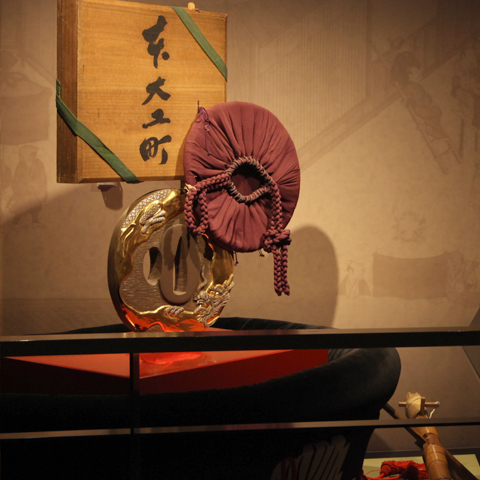
Get to know Nagasaki’s city structure, through sources such as the “Folding screens depicting Nagasaki in the Kanbun Era”, the “Map of Nagasaki’s wards”, and so on. Analyzing these documents, the vivid life of townspeople and the distinguishing features of the city come to light. A great number of students from all over the country came to Nagasaki, the “city of learning” of the Edo period.
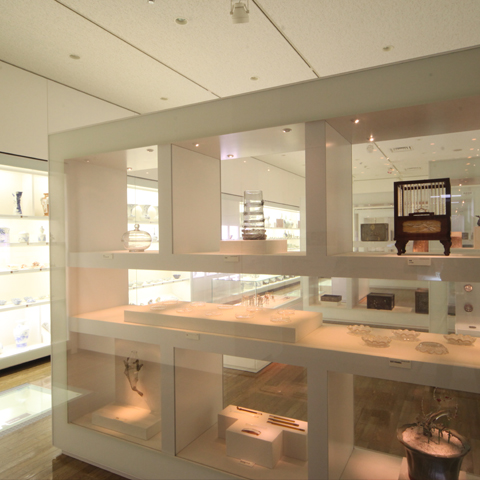
Nagasaki was the origin point of many fashion trends: here we present the masterpieces of Nagasaki arts and crafts, focusing on the theme of exoticism. With our touchscreen devices you can enjoy 360° views of the exhibits, and fully appreciate the appeal of our collection. Special exhibitions on different topics are regularly held in the Arts Exhibition Room.
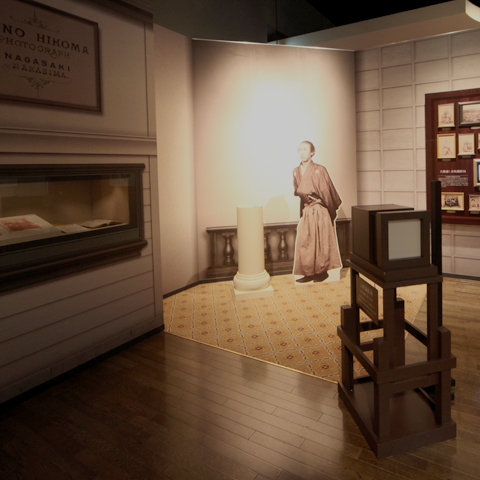
During the last years of the Edo era and the beginning of the Meiji period, Nagasaki continued to be the place where the latest knowledge and technology, and information from abroad, were gathered. With the reproduction of Ueno Hikoma’s photo studio, and an introduction to typesetting and to the transmission of Morse code for international communications, you can have a taste of the atmosphere of those times.
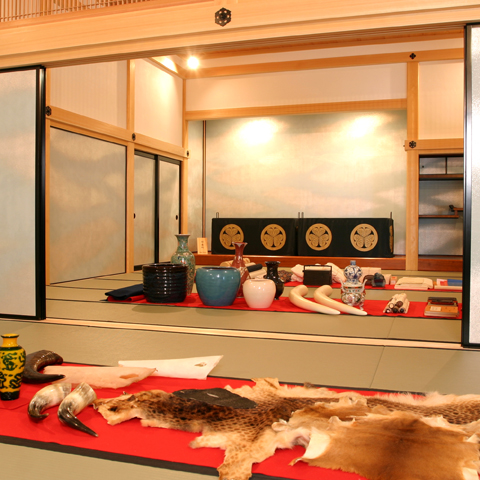
The Nagasaki magistrate had wide-ranging responsibilities, involving administration, justice, diplomacy, trade, overall military affairs, and the control of Christianity and smuggling. Here we introduce those duties.The room where Nagasaki magistrates received feudal lords and other visitors has been restored all the way up to the toilet in the veranda, to let you experience its original atmosphere. In the oshirasu, the court of law of the Edo period, cases tried by the Nagasaki magistrate are reenacted with short costume dramas.
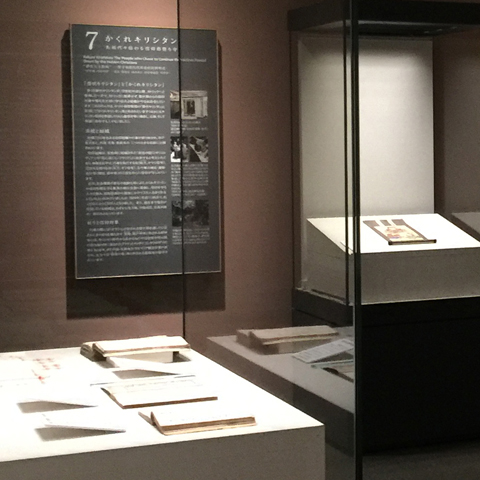
Fumi-e (tablets with Christian images to be trampled on) were one of the measures used by Nagasaki magistrates in their persecution of Christian believers. Also on display are the Madonna of the Thumb, which was in possession of the Italian missionary Sidotti in 1708, and other religious objects, which had been placed in a dedicated storehouse in the Nagasaki Magistrate’s Office (now in the Tokyo National Museum Collection).

The Nagasaki Museum of History and Culture boasts a collection of 81,000 items, from precious historical materials to artworks and ancient documents, all related to the history of Japan’s foreign exchanges.
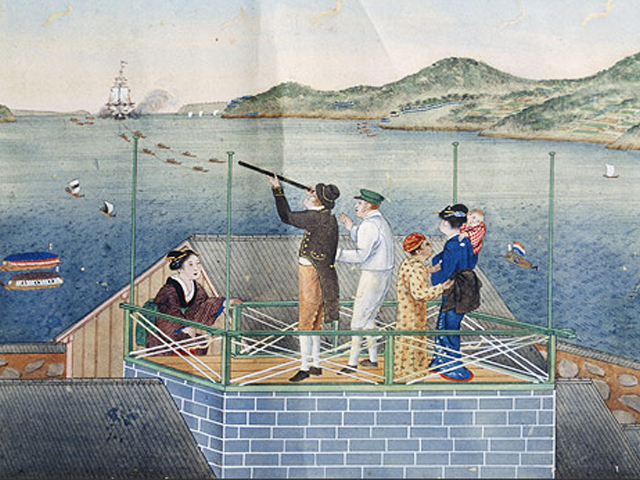
Views of the Dutch Factory (The arrival of a Dutch ship)
Kawahara Keiga 19th century
Kawahara Keiga worked as a personal painter for Siebold, the Dutch trading post’s physician. Many of his works were brought to Europe, and revealed Japan to the rest of the world. Keiga’s paintings reproduce realistically Japan’s landscapes and daily life, flora and so on.
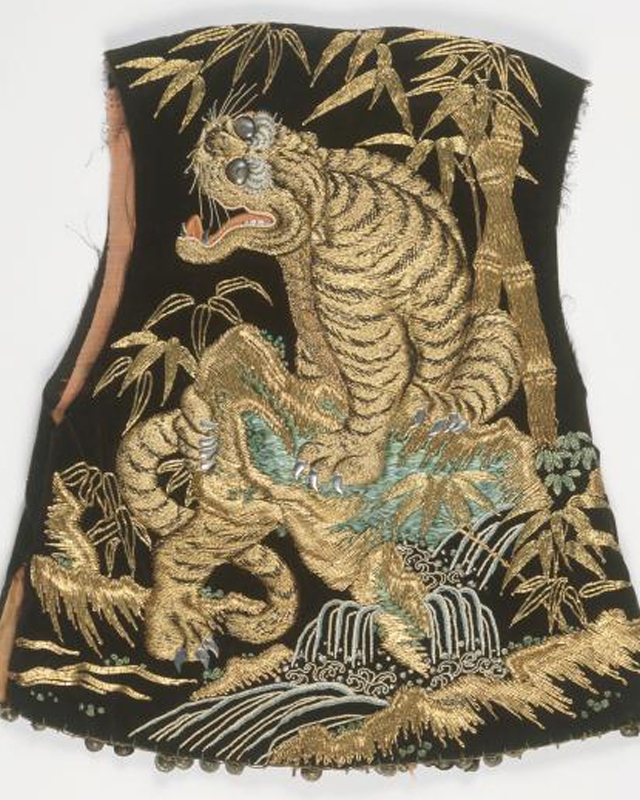
Embroidered karako (Chinese child) lion dance costume
Nagasaki embroidery
In the middle of the Edo period, Nagasaki embroidery developed under the name “Chinese-style embroidery”. Based on the techniques of Chinese embroidery introduced by Chinese people, it started with Chinese-style designs making use of gold and silver thread, but it gradually evolved into a unique craft, with Nagasaki artists providing preliminary sketches of animals and fish. Today, the embroidered costumes and kasaboko used in the great festival of Suwa Shrine, the Nagasaki Kunchi, are widely known.
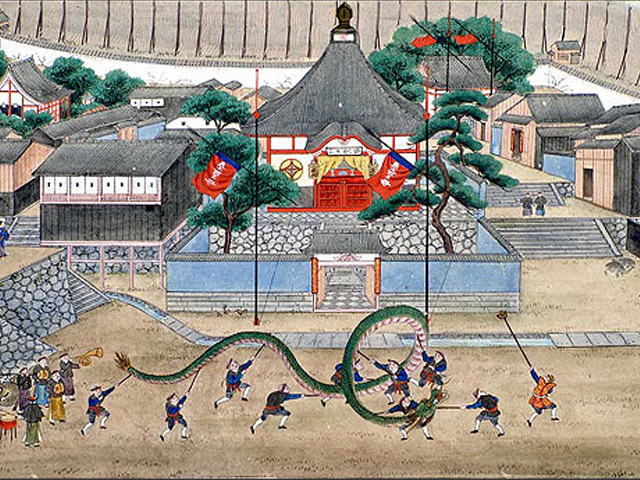
Views of the Chinese Quarter (Dragon dance)
Kawahara Keiga 19th century
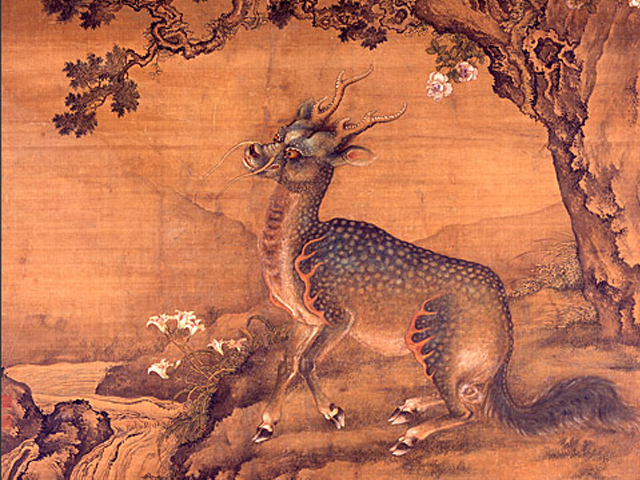
Kirin
Shin Nanpin 18th century
During the Edo period, different artistic styles came into fashion in Nagasaki: Ōbaku painting, Chinese painting, Shin Nanpin school, literati painting, and Western-style painting. These formed the so-called “Nagasaki school”, which breathed new life in Japan’s contemporary art world and significantly influenced it. This picture of a kirin is a masterpiece showing a grand and imposing style. Shin Nanpin’s realistic and colorful paintings were also appreciated by the shogun and by daimyos.
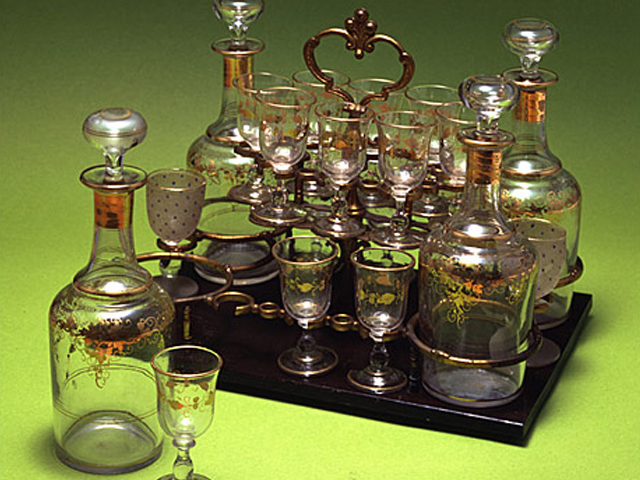
Glass liquor decanter set, gift attributed to Siebold
Beginning of 19th century
This item is said to have been a gift to the lord of Isahaya from Siebold. Glass was called “bidoro” and “giyaman” in Japan, and was highly prized. At the time, other than glass, porcelain, calico, gilded leather and other goods brought by Dutch and Chinese ships charmed Japanese people with their exoticism.
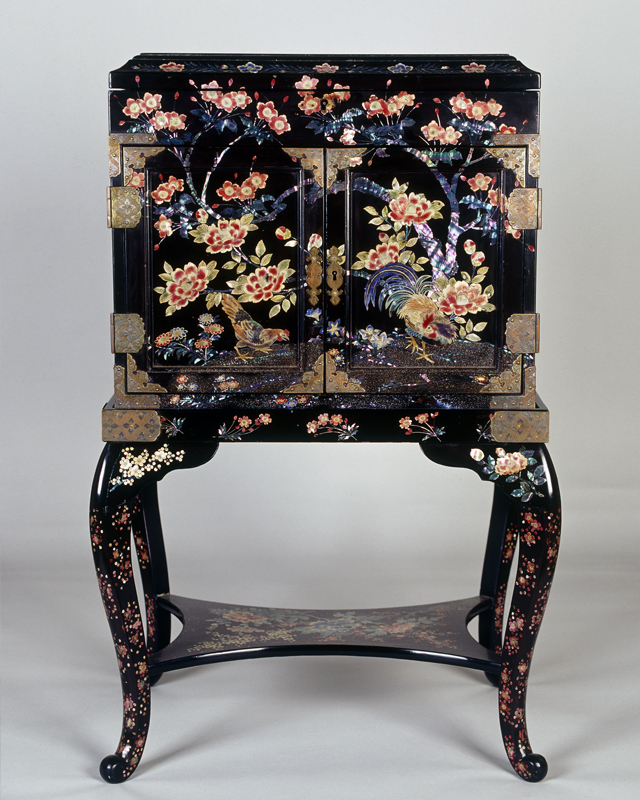
Inlaid mother-of-pearl cabinet desk
19th century
Japanese lacquerware and ceramics were exported from Nagasaki in large quantities. These objects charmed European people with their orientalism, and were treasured by royalty and nobility as status symbols.
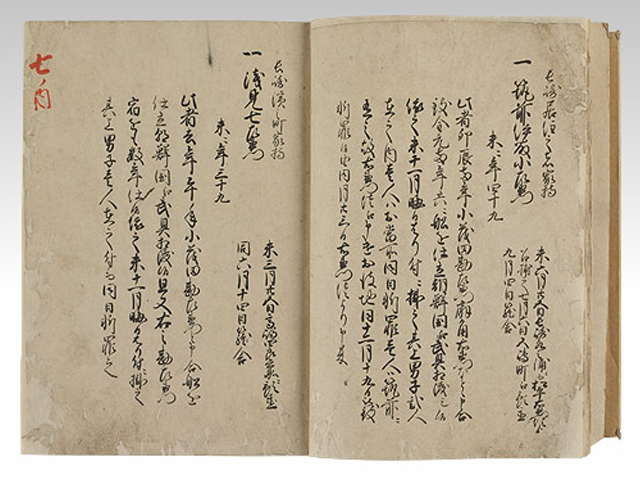
Hankachō
17th – 19th century
During the Edo period, Nagasaki was under the direct control of the shogun, who administered it appointing a Nagasaki magistrate. 127 generations have left their mark in this office. Our Museum owns precious historical documents, found only in Nagasaki, telling the story of overseas exchange, including the Hankachō, or records of criminal judgements, such as smuggling cases and so on, spanning 200 years, and the Dutch-Japan Treaty of 1856 (nationally-recognized important cultural property).
Map of the surrounding area
■By JR Line
From JR Nagasaki station, 15 minutes’ walk in direction of Sakuramachi.
■By streetcar
5 minutes’ walk from “Sakuramachi” stop.
10 minutes’ walk in direction of Sakuramachi from “Nagasaki Eki Mae” stop.
10 minutes’ walk in direction of Sakuramachi Elementary School from “City Hall”.
■By bus
Nagasaki bus: 3 minutes’ walk from “Museum of History and Culture” bus stop.